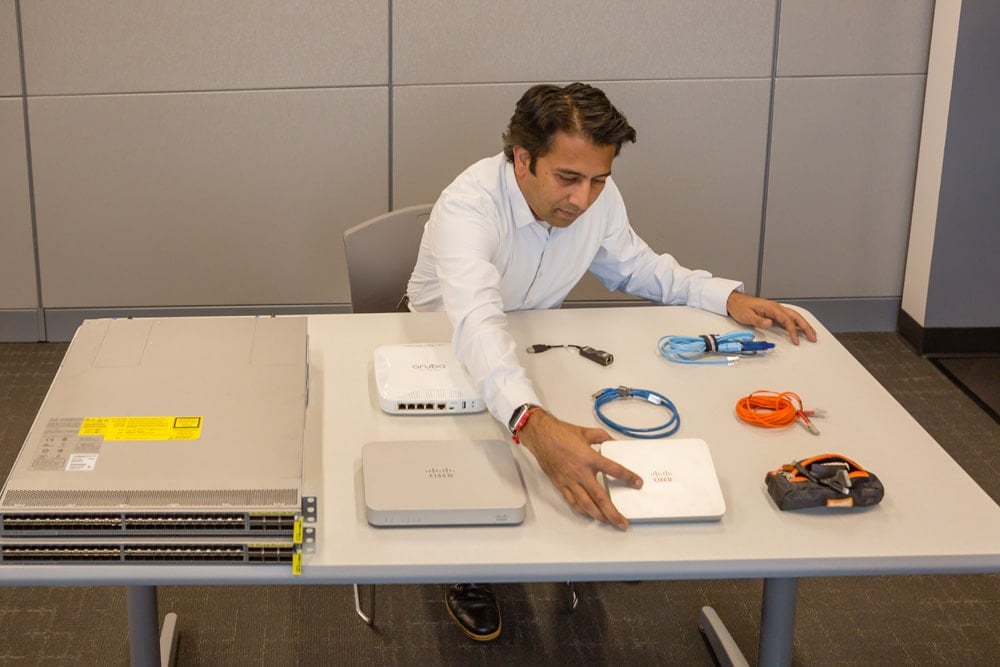What Does An Efficient IT Department Look Like?
Editor's note: This article was originally published in 2019, but has been updated to include the latest information and trends.
Achieving maximum efficiency is an important goal for all IT departments. Unfortunately, many organizations don't reach this goal. According to a survey by Deloitte, only 22 percent of chief information officers agree that they have a high-performing IT culture.
What does IT efficiency actually look like? An efficient IT department is one that has a systematic approach to resolving and preventing IT issues. This means having plans in place within your organization to minimize unexpected outages, crashes, and performance issues—a proactive, rather than reactive, stance.
Businesses of all sizes and industries should care about IT efficiency. However, IT efficiency problems are often more easily recognizable and damaging with smaller companies, while bigger organizations might be able to hide and compensate for these inefficiencies for a period of time.
For smaller companies, IT efficiency is often a “sink or swim” issue.
In my role as vice president of engineering for a managed IT company, I meet with potential customers every day and I see firsthand the impact inefficient IT organizations have on small and medium-sized businesses.
In this article, I’ll walk you through the ins and outs of IT efficiency. After reading this article, you'll understand the signs of an inefficient IT organization, the pitfalls to avoid, and how to foster efficiency in your internal or external IT support organization.
What Does An Inefficient IT Organization Look Like?
Most people would quickly nod their heads in agreement when I say that one of the signs of an inefficient IT organization is an unresponsive help or service desk. This is a big red flag that your IT organization is not efficient.
But, there are more subtle signs as well. Say your IT organization receives a request to install a printer. Put yourself in the shoes of the customer. If days go by without a sign of action, what would you do? Probably go to a local store, buy a printer, plug it in and start using it, right?
With the growing popularity of remote work, what happens if your organization's internet connection is spotty? Employees might be tempted not to use the company's virtual private network and use a mobile hotspot or public wi-fi instead.
What Are The Consequences?
Known as shadow IT, employee-generated IT solutions can compromise the efficiency of your IT support team.
Shadow IT also makes it nearly impossible for your IT support team to stay on top of what devices are operating across your network at any given time, let alone maintain, update, and service them.
It can also lead to widespread security issues as we discussed in the examples above.
When your IT organization isn't efficient, your return on investment is suboptimal, which can lead to financial and staffing cuts that make it even harder to maximize efficiency.
What Efficiencies Do IT Organizations Overlook?
The role of IT professionals has gotten more complex in recent years. Here are some of the opportunities for efficiency that I often see overlooked:
1. Security
In general, security is an overlooked yet crucial factor for IT efficiency.
Make sure to perform security audits of your IT environment on a regular basis.
Related article: What's An IT Vulnerability Scan? What Are The Benefits? Do I Need One?
With every day fires demanding your daily attention, it can be easy to get complacent and assume that everything is fine because you haven’t heard any complaints or experienced any disasters.
Don’t settle for the status quo—always be thinking ahead when it comes to security, looking for the best path forward.
2. Hardware & Software Refresh
Create and stick to a schedule for reassessing your hardware equipment and software licenses.
You don’t want to realize too late that your IT resources are out-of-date, and be forced to wait until the next budget cycle to refresh them. The old saying “if it ain’t broke, don’t fix it” might be good advice for some situations, but not enterprise IT.
3. Strategic Vision
Make sure your IT organization is aware of the broader overall strategic vision of the business.
There are IT implications for everything from launching a new product or project to increasing your workforce by 10 percent in the next year. Make sure your leadership understands that to best support the entire organization, your IT folks need to know what's next so they can have the technology ready.
4. Staffing
Understand the key players in your IT organization and what would happen if one of them was suddenly unavailable due to a medical emergency or a new job opportunity. You don’t want to be left scrambling after a key figure leaves, struggling to compensate for their absence.
Make sure you have the experts you need.
Related article: IT Staff Turnover Affecting Your Business? 3 Creative Solutions
What Are The Keys To Efficient IT?
Here are key elements that efficient IT must include:
1. Processes
Processes are the first step toward efficient IT organizations. These processes typically share several traits:
-
-
- Documentation
An efficient process must be written down in clear language, so that all employees know how to follow it. - Communication
Employees must be aware of the process, and the documentation should be easily accessible. - Standardization
The process is consistent across the entire organization. - Examination
At regular intervals, the process is reexamined to ensure that it remains efficient. - Evaluation & Improvement
IT is not a “set it and forget it” kind of industry; processes need constant improvement based on changes in technology and personnel. - Security
Confidential and sensitive data is protected throughout the process, both in transit and at rest.
- Documentation
-
2. Performance
Once you ensure that your processes are in line with the best practices above, define the metrics and key performance indicators (KPIs) that you will use to measure success.
For example, if you want to assess the efficiency of your customer ticket resolution process, you can define KPIs such as:
-
-
- How many customer tickets are arriving daily, weekly, or monthly?
- How long, on average, does a ticket remain unclaimed before being addressed by a technician?
- What is the average time to resolve a ticket?
-
Based on the answers to these questions, you can start to look at how to improve your IT processes, and thereby improve these KPIs.
Resources such as the Information Technology Infrastructure Library (ITIL), a framework for IT services management, are invaluable for organizations looking to increase their IT efficiency.
The CISSP (Certified Information Systems Security Professional) certification focuses on IT security, but also has a wealth of good information about IT best practices.
3. Automation
Cloud-based tools that use automated monitoring, updates, and patching, will yield significant efficiencies for your IT support staff, freeing them up to work on longer-term projects or address the daily user emergencies.
4. Proactive Stance
If your IT organization is constantly in reactive mode and responding to daily emergencies, who is planning ahead to ensure that you are ready for what's next?
How do you keep on top of the strategic direction of the business so that you have the technology in place to support short- and long-term organizational goals?
Issues such as IT capacity, equipment lifecycle, and software licenses should be dealt with proactively, to avoid surprises that could derail your IT operations.
Ensure that your organization isn't caught without the tools it needs to successfully achieve its goals.
5. Strategic Partner
Many IT organizations struggle with the reality of being viewed as a transactional cost center rather than a competitive differentiator.
The reality today is that without strategic technology advancements and support, most organizations would grind to a halt. IT teams need to earn the trust of organizational leadership to ensure that they have a seat at the table when strategic direction and long-term goals are being discussed.
Seemingly small decisions, like adding 10 staff members can be just enough to bring traffic on your network to a crawl.
Without a seat at the table, IT is forced into a reactive role. When IT is part of the leadership team and kept informed of organizational goals, the team can be proactive and ensure that the technology is ready to support what's next.
What's The Bottom Line?
After reading this article, you know what an inefficient IT department looks like. We've talked about "do-it-yourself" IT solutions. You understand the potential consequences of the inefficiencies and how shadow IT can affect the security of your entire network.
You've learned the efficiencies that IT organizations often overlook: security, hardware and software refresh, strategic vision, and staffing. And, you know the keys to efficient IT: processes, performance, automation, being proactive, and strategic partnerships.
The good news is that a more efficient IT department means that the lives of users will be easier, and their jobs of your entire IT support staff will be less stressful and more satisfying.
Taking a reactive stance to IT problems and issues puts your company in a vicious cycle that can be hard to escape. Put an end to this feedback loop by getting ahead of the curve and putting in the work to have a proactive, efficient IT department.
You may have an internal IT department that can help realize these efficiencies.
If you have a small internal IT support staff (or no IT staff at all), you may want to consider partnering with an external IT support organization.
Wondering what your options are? Find out the differences between break/fix and managed IT support.
When considering partners, evaluate several options to ensure you get the right fit for your organization. Learn the important questions to ask any IT service provider.
If you prefer to talk with a person, click on the link below and one of our experts will schedule a call to discuss your technology pain points and explore whether we are a good fit to work together.




